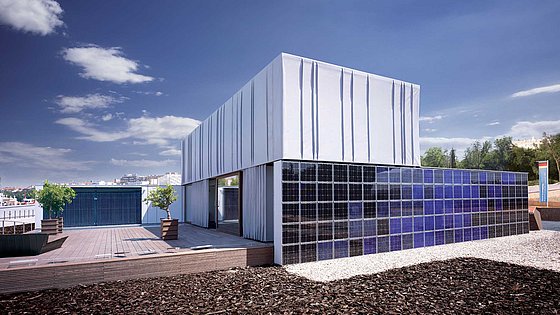Integration of solar systems into the architecture

Three examples of the integration of solar systems in the contribution of the University of Wuppertal to the SDE 2010: PV façade integration, Façade integration of vacuum tubes, PV roof (without visibility) © Peter Keil
Since the beginning of the competition, the functional and design integration of solar systems into architecture has been a central theme. Photovoltaic systems are a mandatory component of all houses, solar thermal systems are used in many buildings. The goal of net zero or net energy positive buildings is associated with comparatively large systems, which often occupy façades as well. More than with roofs, questions of shading and conflicts with other façade components such as windows or balconies have to be dealt with. The competition thus takes on a pioneering role for the practice of integrating solar systems in new and in existing buildings.
A very important feature of integration is the degree of visibility of the solar systems: Low-visibility installations on flat or low-slope roofs often allow the use of low-cost standard systems. Greater visibility, such as on pitched roofs but especially on façades, increases the need for architectural integration and delivers details to object-specific, individual products.
- Geometry: This is about the mediation between the formats of PV modules or collectors and the formats of other components within the same surfaces, e.g. roof shingles or skylights.
- Materiality: Most solar systems have a glass skin and therefore already appear different from many common façade surfaces made of wood, stone or metal due to their materiality.
- Color: Solar systems appear dark because it is their job to absorb solar radiation. Dark façades are more rare than usual. For roofs, the color adaptations are easier, as dark roofs are also introduced in many places.
- Detailing: On closer inspection, especially on façades, profile materials and brackets become visible and essential to the overall appearance.
Due to its significance, there is a special prize for the theme at SDE 21/22. This prize is awarded by the Solar Heating & Cooling Program of the International Energy Agency IEA together with the International Solar Energy Society (ISES).
Further reading
